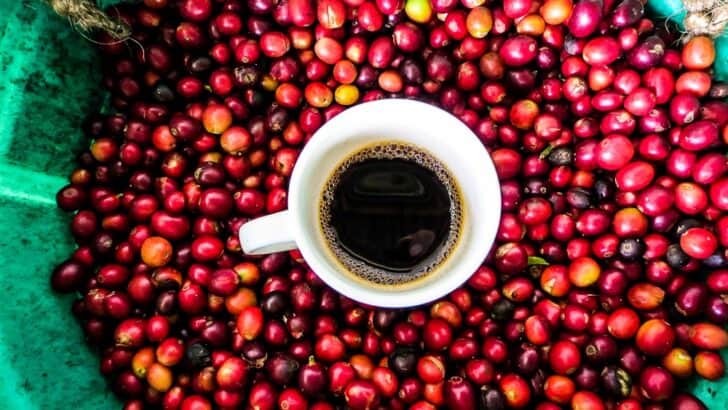As most people that make their way to Salento, I too am absolutely addicted to the brown stuff, and there isn’t much else as quintessentially Colombian than coffee. A significant portion of the world’s Arabica beans come from the fertile valleys of the Andes in the middle of Colombia.
Harvesting enough to keep up with the demand of a busy and tired world is no easy task. It’s hard manual labor collecting the beans that make the drink that you may even be slipping on as you read this.
*When looking for the best price and biggest selection of hotels check prices on Booking.com, we’ve found they are the best option and have a great cancelation policy.*
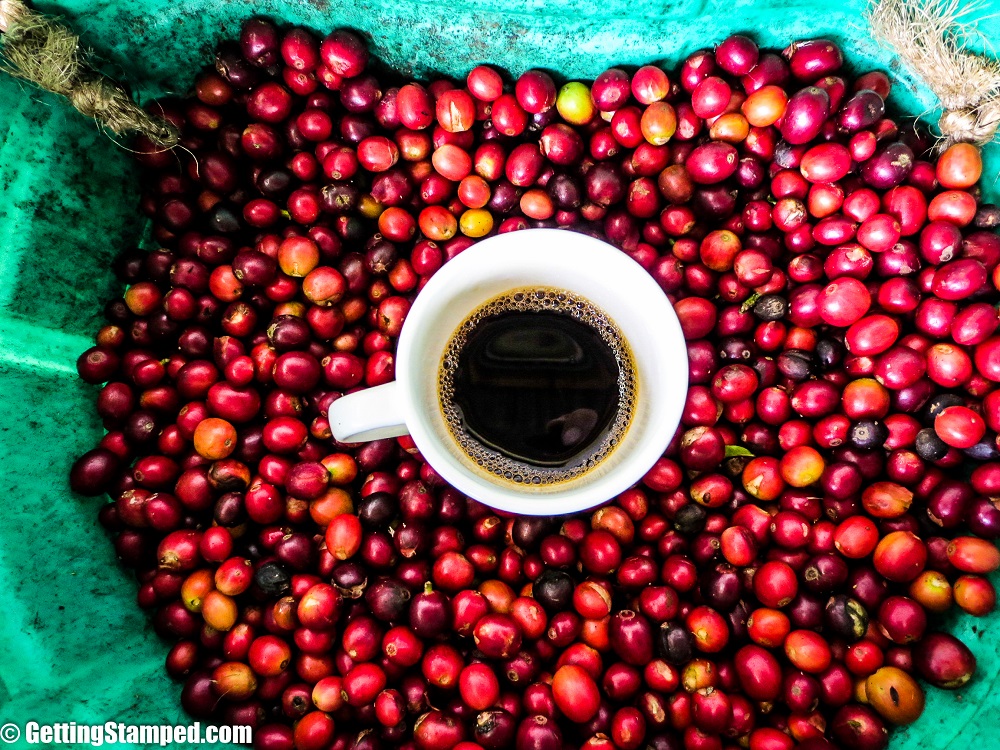
Maybe it’s my engineering mind but I always want to know how things are made… you know the behind the scenes stuff! So while in the coffee zone I jumped at the chance to work the fields for and day and see what it was all about.
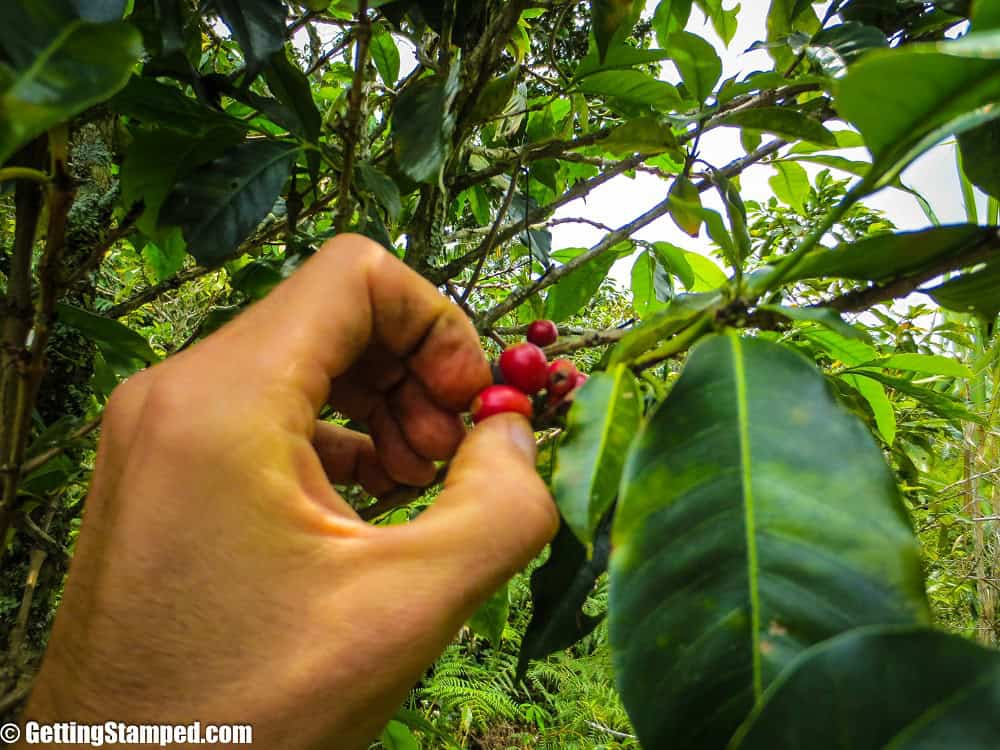
After a short lesson of what color beans to pick, and proper technique to pluck them from the tree I was off to fill my buckets with the bright red coffee cherries. After an hour of picking, I don’t have a lot more than what covers the bottom of my green pale.
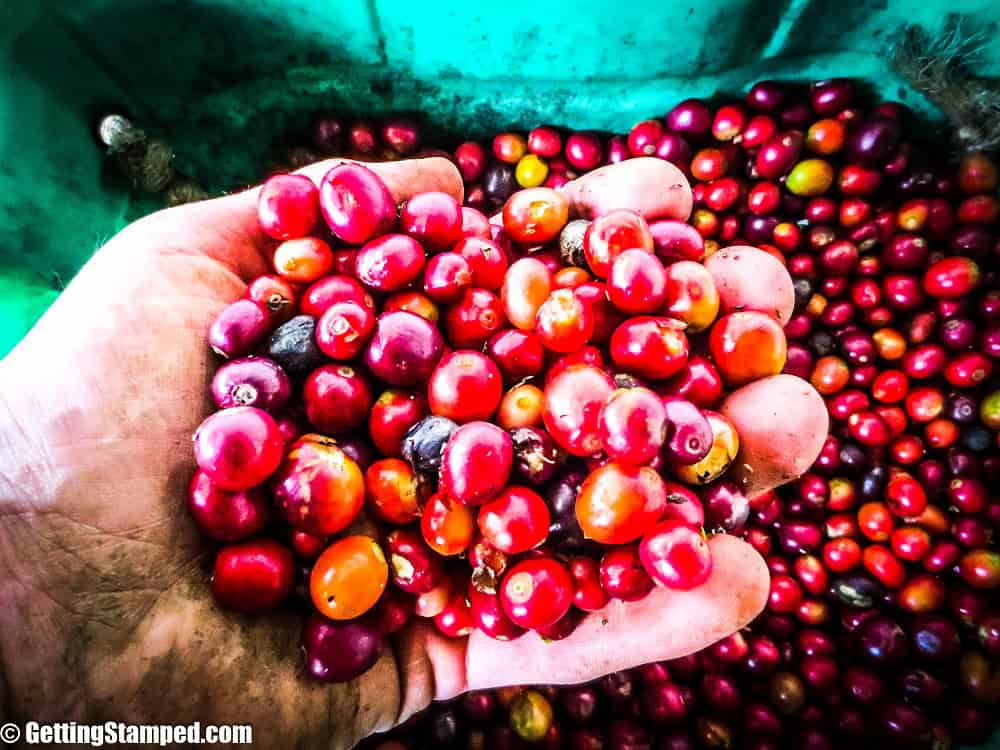
A combination of my rookie skills and primarily that it’s not the main harvest, made picking an even slower process than normal. After 5 hours of standing on slopes that would make a goat slip, me and one of the farm hands collected nearly 10 kg (22 lbs) of cherries.
That doesn’t really sound like a lot of coffee does it? Well, it’s not, and considering you need to loose the skin, dry them, and of course roast them it’s even less than it sounds. From tree to your cup the beans lose about 85% of their weight. So the 20 lbs of coffee fruits will end up begin about 3 lbs between the two of us.
My office for the day
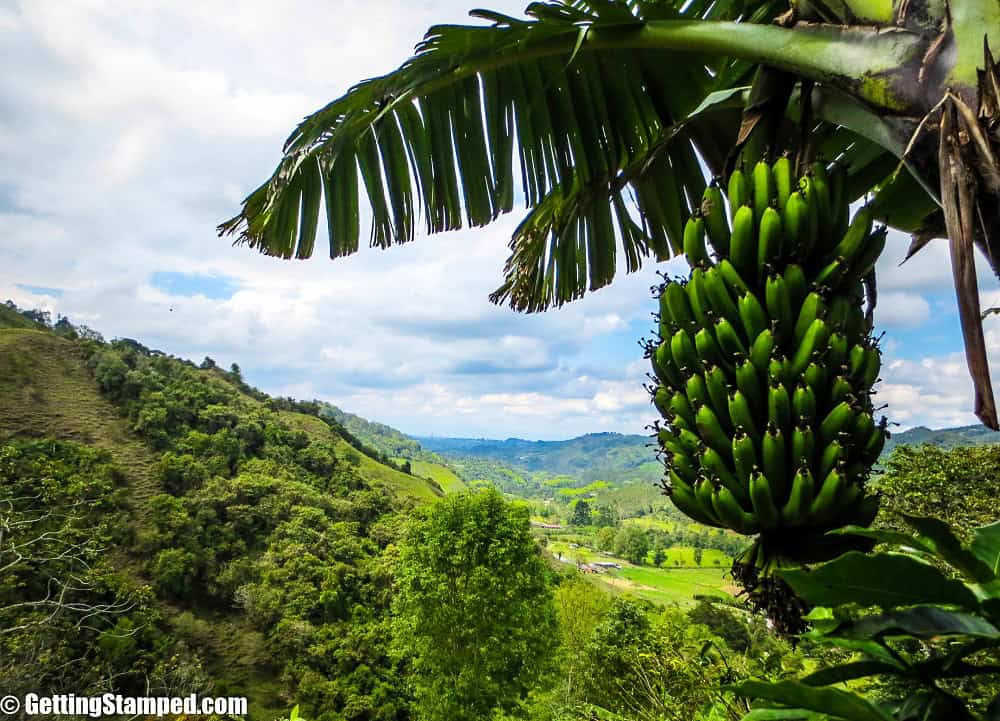
It’s not easy work, but the office and the co-workers are pretty good. My co-worker of the day were the farm dogs, who spent most of the day with me just lounging between the rows of coffee.
Berries to Coffee
Once the bright red fruits are snatched off of the trees there is still a lot to do before it makes it to your cup. The seed or bean inside the fruit is the only part that will one day be coffee, so first you have to get it out of the fruit!
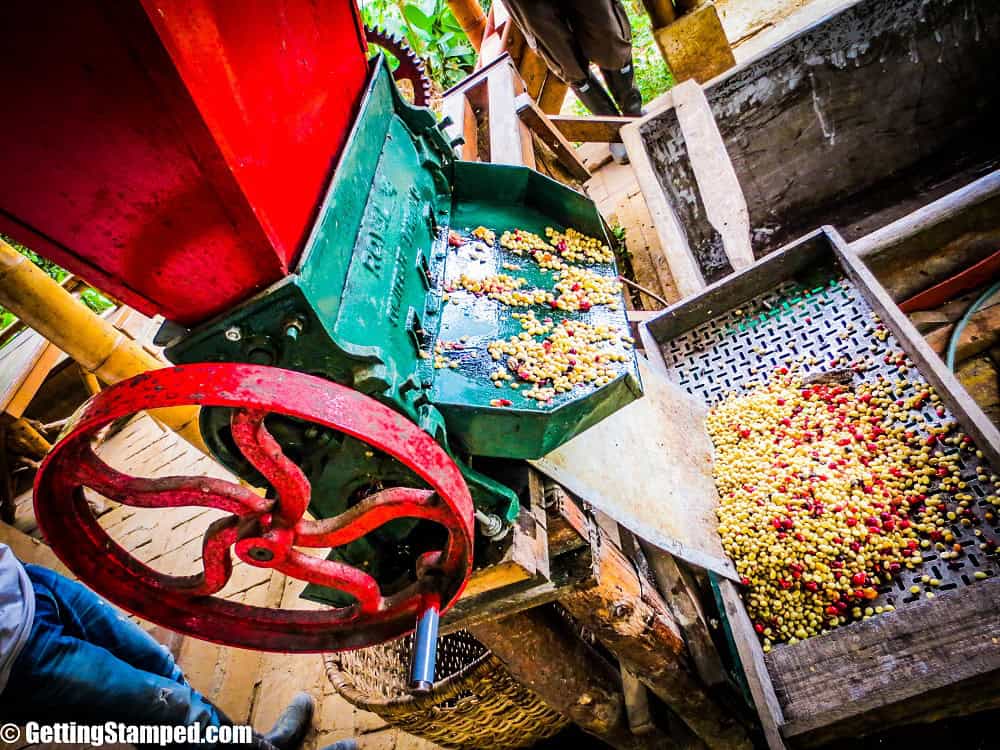
That’s where this contraption comes in handy, the “Dispulpadora” lightly crushes the cherries and separates the fruit from the bean. The beans go forward and fruits fall off the back. The tray of tan colored beans then have to be sorted and final separated, which is done by hand, today my hands!
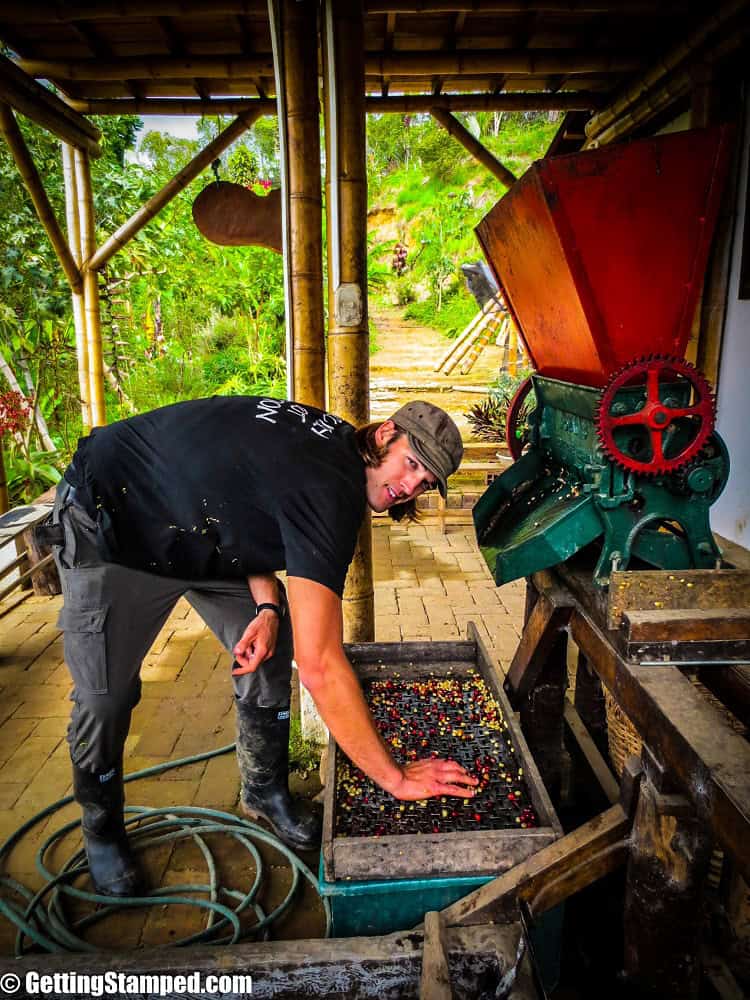
After this step, it takes a few days before they are ready to be dried then roasted and ultimately coffee. We have another post coming soon on the full spectrum of start to finish of coffee.
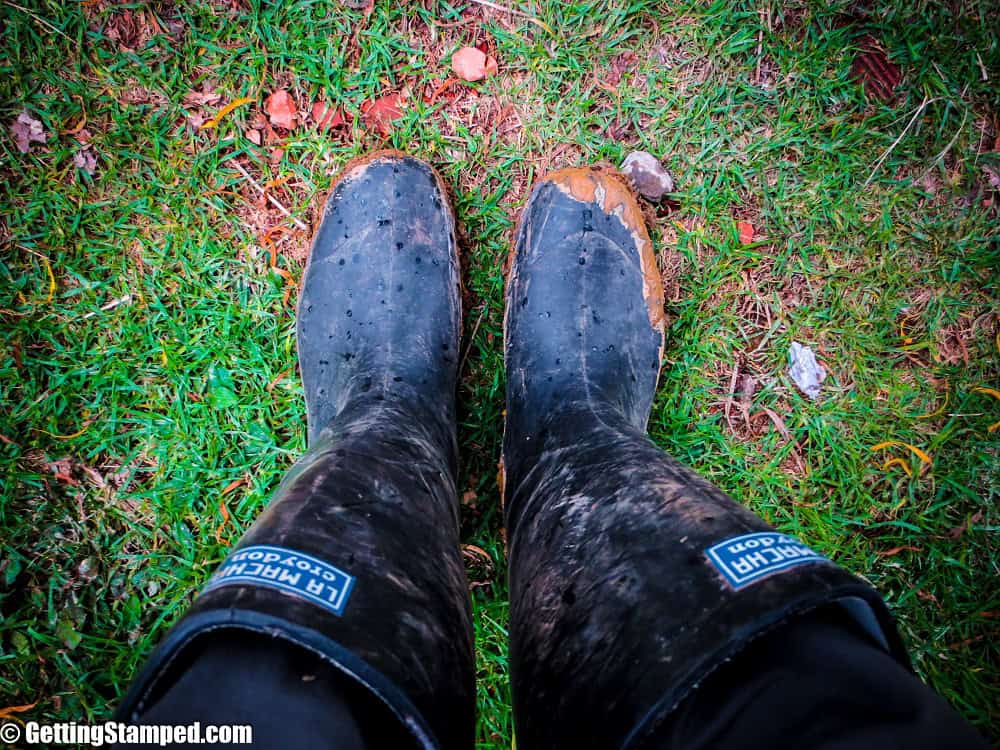
This was the first day that I “worked” since quitting my job for this trip, I couldn’t help but think about it that day while in the fields. It felt good to get my boots dirty and work a little bit, and I love learning about the things that normally we take for granted. Thanks to the Plantation House for giving me a shot at being a coffee farmer for the day, and teaching me the behind the scenes of coffee!
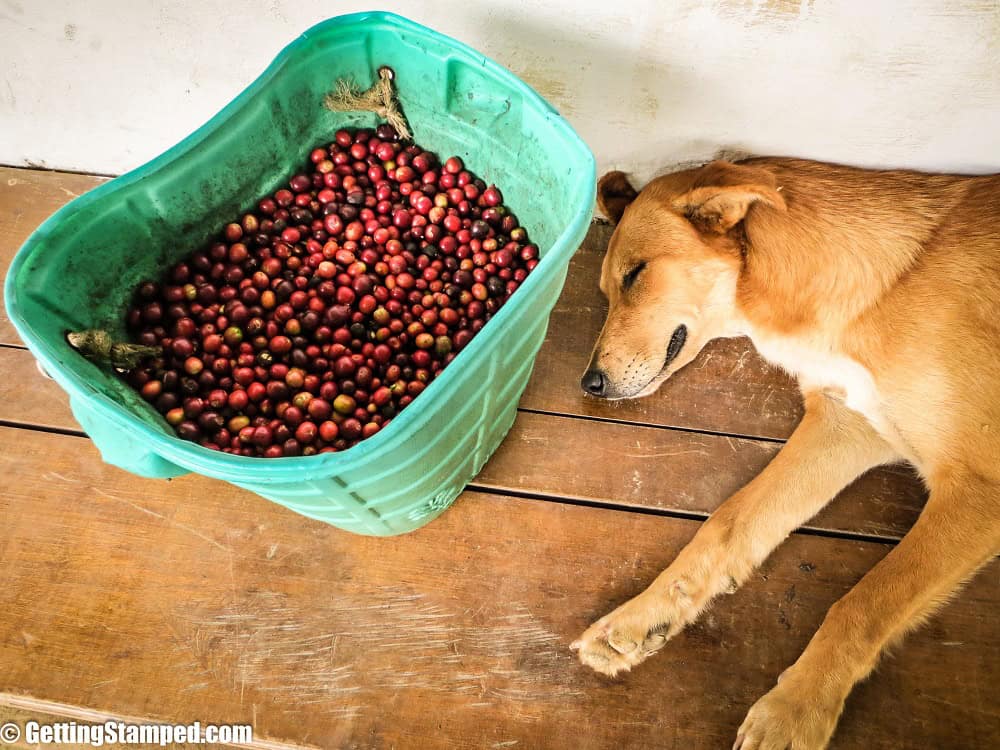
It was some tough work, we all could have used a nap afterward!
